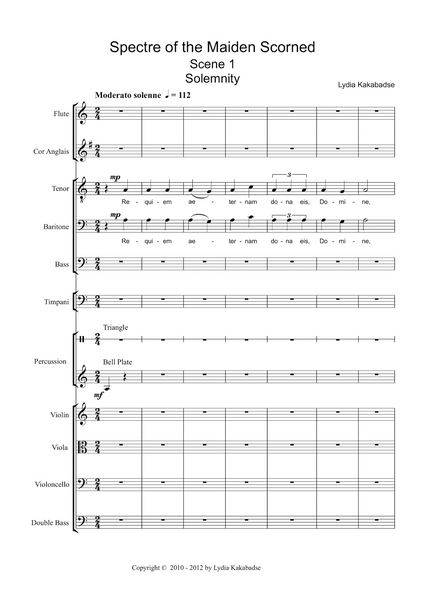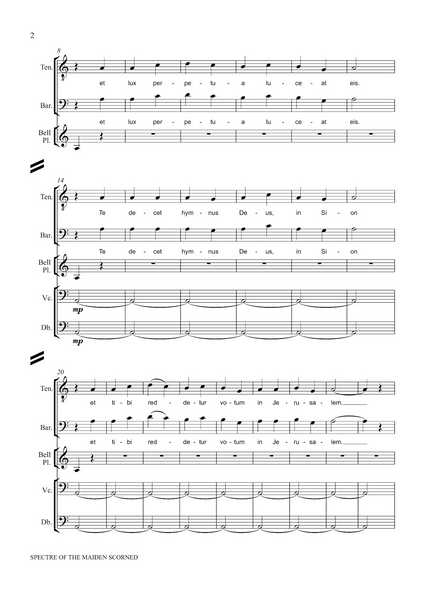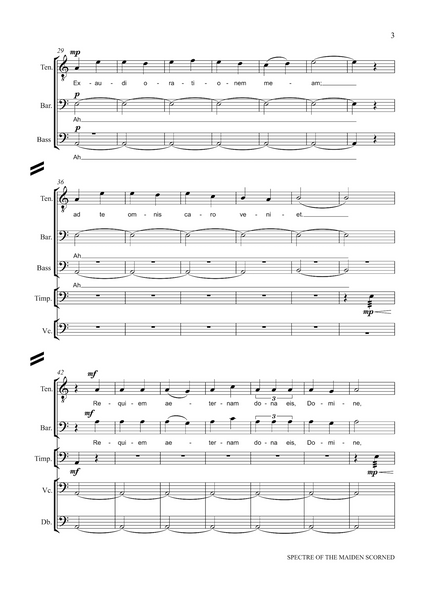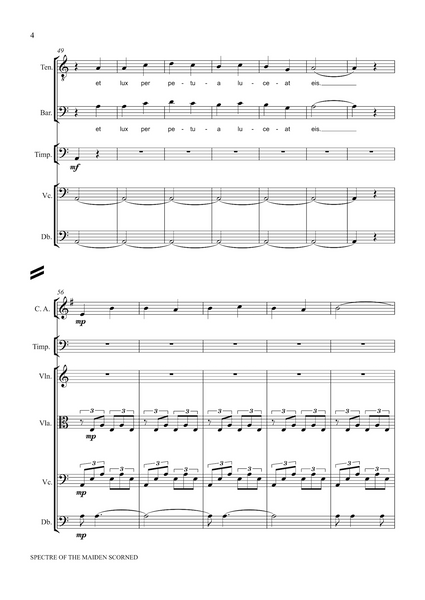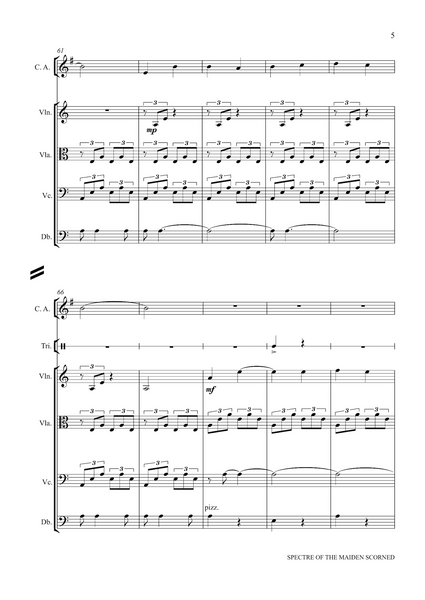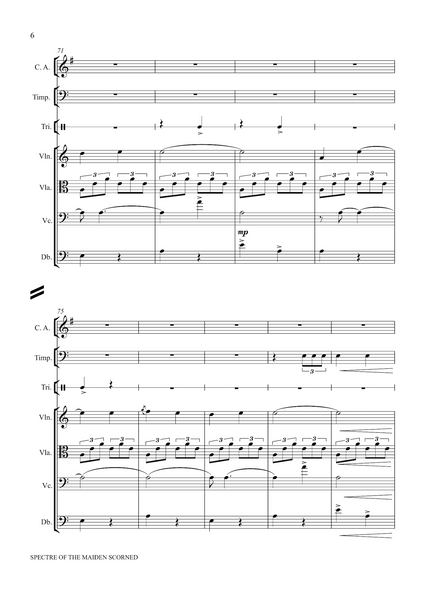Lydia Kakabadse: Spectre of the Maiden Scorned – Concert Requiem Mass (NXP162)
This is a sheet music edition of Spectre of the Maiden Scorned by the composer Lydia Kakabadse.
Sheet music for solo mezzo soprano, male-voices and instrumental ensemble
Flute
Cor Anglais
Timpani (A E F' F, C B♭)
Percussion (Triangle, Bell Plates (A E C), Suspended Cymbal, Sizzle Cymbal (or Mark Tree), Tam Tam, Bass Drum)
Violin
Viola
Cello
Double Bass
Score: 104 pages
Parts (flute, cor anglais, violin, viola, cello, double bass): 48 pages
Duration: 24:04 minutes
Audio sample
Preface and programme notes
The idea of creating a dramatic choral work based on a story of mine in the setting of a monastery had been on my mind for some years. However, it was not until September 2010 that this idea started to take shape, leading to the creation of Spectre of the Maiden Scorned – a concert Requiem Mass.
The background to this work centres round love, greed and betrayal. A young monk (solo tenor), whose family are generous benefactors to the monastery where he resides, falls in love with a maiden (mezzo-soprano) and decides to elope with her. Fearing the end of the riches he had been enjoying from the young monk’s family, the greedy Abbot of the monastery sets out to destroy the relationship. With the lure of false promises and damning lies about the maiden, the Abbot convinces the young monk to give her up. Scorned and betrayed, the maiden takes her own life.
The work is made up of six scenes. The first five scenes include the following regular Latin texts found in the Roman Catholic Requiem Mass – Introit, Tract, Sequence, Offertory and Agnus Dei. Latin texts taken from the Book of Zephaniah (Old Testament of the Bible) appear in scenes 4 and 5. The sixth scene is set to an English text taken from The Maiden’s lament to her false lover by Martha Lavinia Hoffman. The strings make up the core instrumental accompaniment, to which are added the melancholic tone of the cor anglais, the versatility of the flute and a wide range of percussion instruments, including bell plates.
The Abbot’s funeral is the setting for Spectre of the Maiden Scorned, where the Requiem Mass is being celebrated by the monks, including the young monk. Scene 1 is written in the Aeolian mode and begins with the tenors and baritones singing in unison a cappella, accompanied shortly afterwards by a bass drone on the cello and double bass. The cor anglais announces a recurring theme – a leitmotif – associated with the maiden and a deep sense of sorrow. In contrast to the more monophonic singing in the Scene 1, the second scene makes use of four-part vocal harmonies and introduces the flute, adding colour to the sombre mood. The spectre of the maiden, who can only be seen and heard by the young monk, makes a dramatic entrance in scene 3, with verses from Dies Irae.
Following the young monk’s poignant solo accompanied by the cello and pizzicato running bass in scene 4, the mood changes and there is a sense of foreboding when the maiden enters misterioso singing Dies Irae from the Book of Zephaniah. Her wrath in scenes 3, 4 and 5 is directed at the Abbot and, in order to achieve this, I made certain grammatical and antonymous changes to the Latin texts sung by the maiden.
In scene 5, where Agnus Dei is juxtaposed with Lacrimosa dies illa (from Dies Irae) and a verse from the prophecy of Zephaniah, the maiden spits out the words noli parcere huic ergo Deus (do not spare him therefore God). Whilst the monks beseech God’s mercy with the words dona eis requiem (grant them rest), the maiden begs that the Abbot is not granted rest – noli donare ei requiem.
In February 2012, almost a year after finishing the 5 scenes, I added scene 6, which represents the maiden’s poignant lament – spanning a full two-octave range – and sense of betrayal by the young monk.







